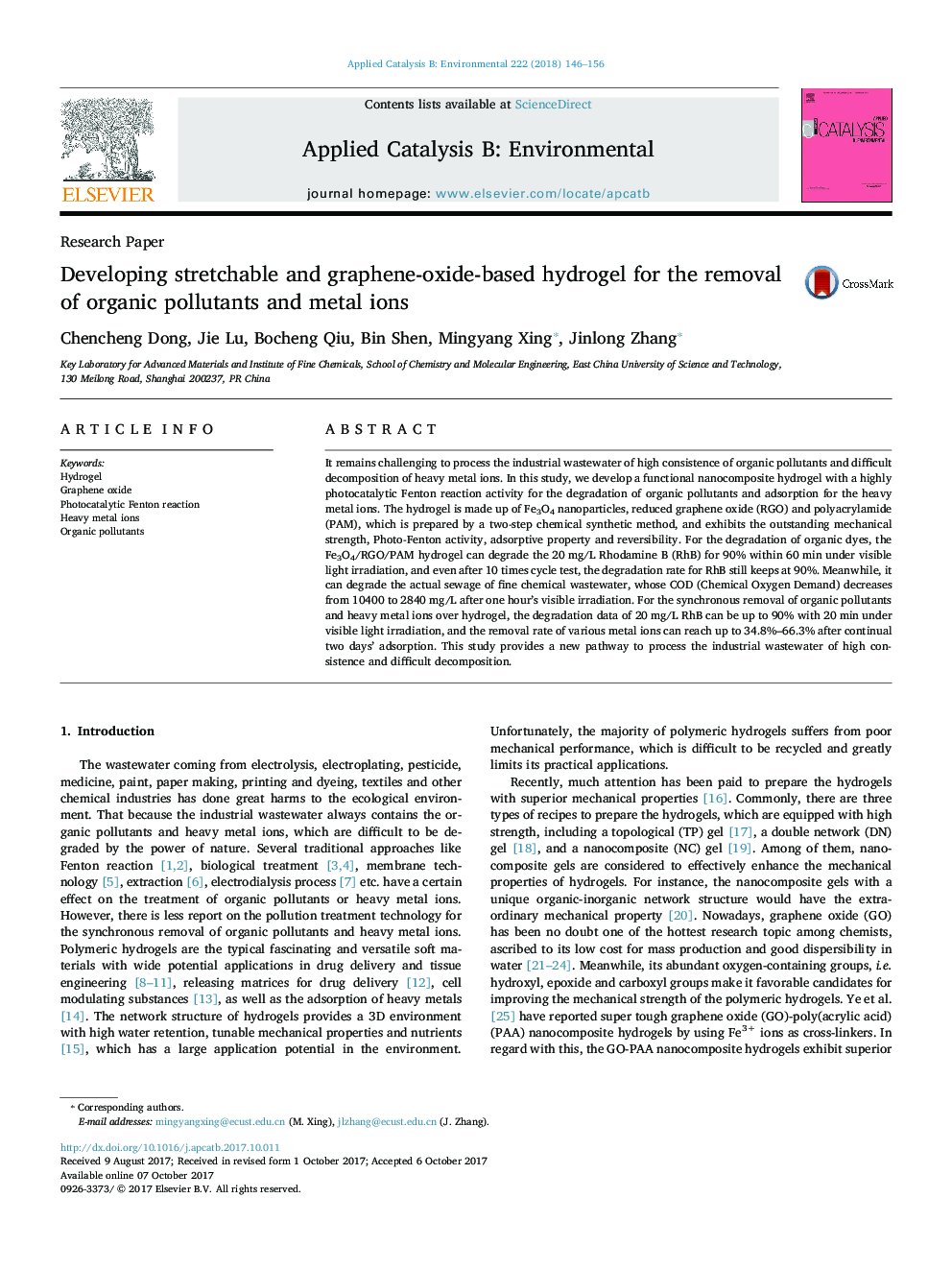| Article ID | Journal | Published Year | Pages | File Type |
|---|---|---|---|---|
| 6453365 | Applied Catalysis B: Environmental | 2018 | 11 Pages |
â¢A graphene-oxide-based hydrogel (Fe3O4/GO/PAM hydrogel) was successfully prepared.â¢The functional hydrogel shows highly photocatalytic Fenton reaction activity.â¢High stability and wide pH range.â¢It provides an opportunity in dealing with practical sewage.
It remains challenging to process the industrial wastewater of high consistence of organic pollutants and difficult decomposition of heavy metal ions. In this study, we develop a functional nanocomposite hydrogel with a highly photocatalytic Fenton reaction activity for the degradation of organic pollutants and adsorption for the heavy metal ions. The hydrogel is made up of Fe3O4 nanoparticles, reduced graphene oxide (RGO) and polyacrylamide (PAM), which is prepared by a two-step chemical synthetic method, and exhibits the outstanding mechanical strength, Photo-Fenton activity, adsorptive property and reversibility. For the degradation of organic dyes, the Fe3O4/RGO/PAM hydrogel can degrade the 20Â mg/L Rhodamine B (RhB) for 90% within 60Â min under visible light irradiation, and even after 10 times cycle test, the degradation rate for RhB still keeps at 90%. Meanwhile, it can degrade the actual sewage of fine chemical wastewater, whose COD (Chemical Oxygen Demand) decreases from 10400 to 2840Â mg/L after one hour's visible irradiation. For the synchronous removal of organic pollutants and heavy metal ions over hydrogel, the degradation data of 20Â mg/L RhB can be up to 90% with 20Â min under visible light irradiation, and the removal rate of various metal ions can reach up to 34.8%-66.3% after continual two days' adsorption. This study provides a new pathway to process the industrial wastewater of high consistence and difficult decomposition.
Graphical abstractHerein, we developed a stretchable and graphene-oxide-based hydrogel in removing organic pollutants and heavy metal ions. The Fe3O4/RGO/PAM hydrogels exhibit excellent photo-Fenton in degradation of 20Â mg/L RhB, and can remove 34.8%-66.3% heavy metal ions after continual two days' adsorption. Additionally, in respect of dealing with practical fine chemical sewage, for instance, whose COD (Chemical Oxygen Demand) decreases from 10400 to 2840Â mg/L after one hour's visible irradiation.Download high-res image (215KB)Download full-size image
